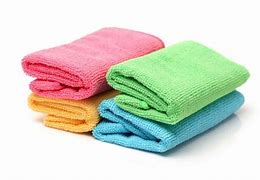In the late 1990s the British Institute of Cleaning Science (BICSc) began to develop a universal colour code for the cleaning industry. There were no National or International compulsory standards that existed in the industry so they devised a simple method with some basic guidelines.
The aim was to raise standards and reduce cross contamination in cleaning areas by using a simple method using four main colours – RED, BLUE, GREEN and YELLOW.
These four colours are implemented across all cleaning equipment to identify what can be used in certain areas, reducing the risk of germs spreading and increasing hygiene throughout a business. The four main areas are public low risk areas, washrooms, food preparation areas and clinical areas.
From 1st January 2006 a number of new food and hygiene legislations were introduced to the UK and as a good practice the Food Standards Agency suggested that separate cleaning equipment should be used in areas were food is stored, handled and prepared. The colour coding system complied with these legislations and have been implemented in many different hygiene practices.
As businesses must now also adhere to the Environmental Health Officer (EHO), the use of this colour coded system is highly useful and has been widely adopted across the catering industry, as well as offices, factories and the retail sector. Choosing to conform to the system in the workplace makes cleaning easy and efficient and in turn increases general cleanliness.
Cross contamination is one of the highest risks in the spread of infections and this system has shown to effectively reduce this risk, preventing bacteria being spread from one area to another.
What is the colour coding chart?
RED – a colour that is associated with hazards, The red colour code is assigned to area such as washrooms.
BLUE – the blue colour code has been assigned to low risk areas. These include office and classroom desktops, hallways and for general dusting and polishing. These areas are where there is generally a lower risk of infections.
GREEN – The green colour code has been assigned to food preparation areas, including kitchens and other areas such as factories where food is processed. The cross contamination of food poses one of the highest risks of infection.
YELLOW – The yellow colour code has been associated with clinical use, such as GP surgeries and Hospital Wards.
Colour Coded Cleaning Items include

- Mops
- Mop Buckets
- Cloths
- Brooms
- Gloves
- Spray Bottles
- Brushes and Dustpans
It is extremely important that you avoid storing cleaning supplies with different colours in the same location.
The Main Benefits of Colour Coding are
- Minimise the risk of cross contamination.
- Streamline cleaning process to make cleaning more consistent.
- Increase customer confidence in processes and cleanliness.
- Remove any language barriers – colours are easily identified.
- Simplify any training requirements.
